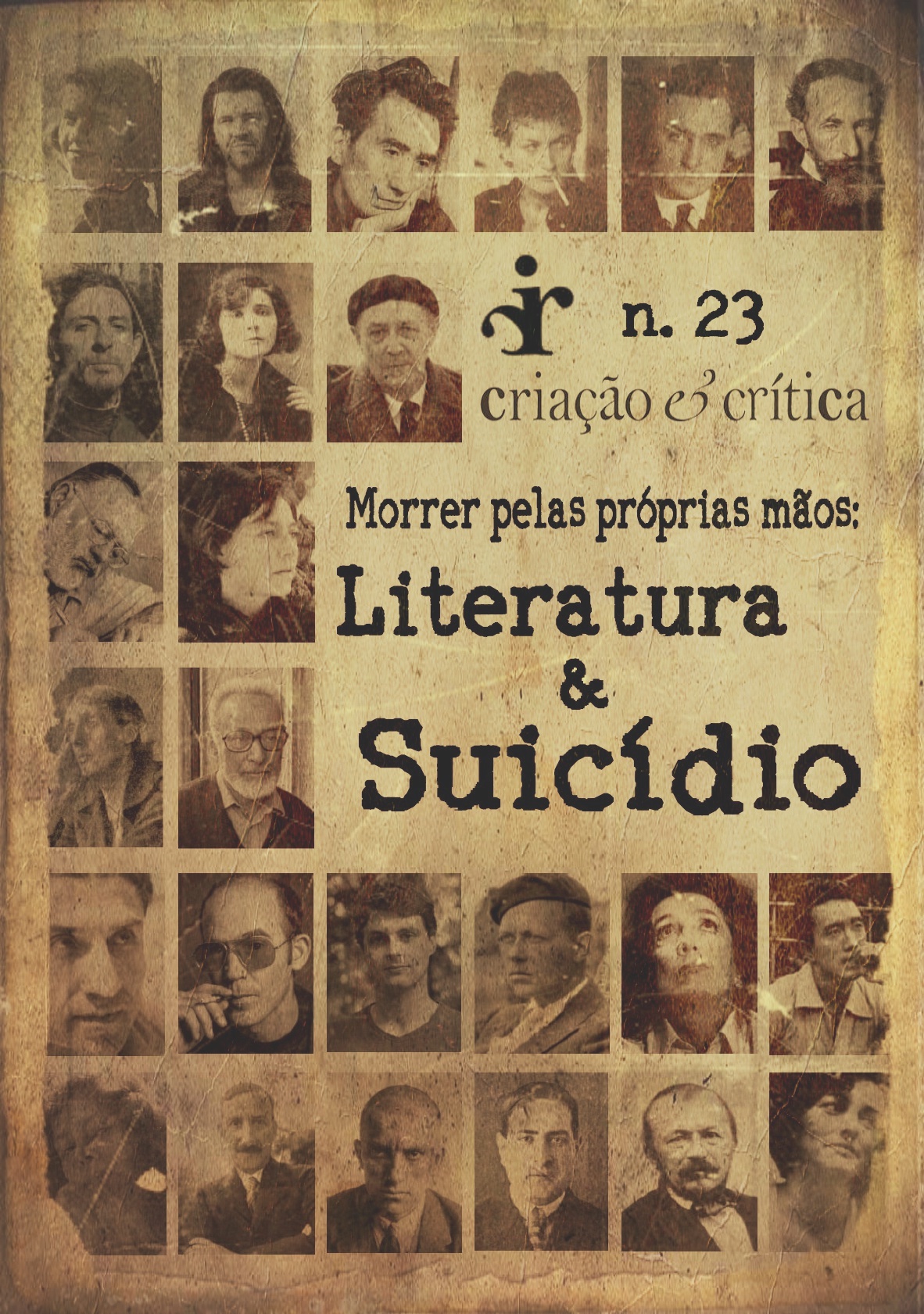Pier Della Vigna x Cat o of Utica
two suicides from Dante’s Divine Comedy
DOI:
https://doi.org/10.11606/issn.1984-1124.v23i23p15-27Keywords:
suicide, Divine Comedy, Dante Alighieri;, Pier Della Vigna, Cato of UticaAbstract
Through the analysis of two cases of Dante Alighieri's Divine Comedy (1998): that of Pier Della Vigna (Canto XIII of Hell) and that of Cato of Utica (designated to be guardian of Pur- gatory, Canto I), this study aims to verify in which way and from which philosophic al - theological precepts, the two suicidal char acters are represented by one of the masterpieces of universal liter- ature. In the first case, according to Vittorio Sermonti (2018), the poet agrees with the teachings of St. Thomas Aquinas, the greatest exponent of the period of Scholastic philosophy, in which those who commit suicide betray God, who have granted man the grace to entrust him, in very first instance, his own life. That is why suicides are condemned to soul - body split, in the circle of the violent in the tortuous infernal jungle. In the seco nd, Erich Auerbach (1989) observes that Cato – although suicidal and pagan – was acquitted by Dante, being assigned to Purgatory, be- cause it would bring together all the characteristics capable of making him an extraordinary "fig- ure" of Christ, since his d eath voluntary would be heroic, in choosing martyrdom to rescue Rome from the bondage of Caesar.
Downloads
References
ABBAGNANO, N. Dicionário de filosofia. São Paulo: Martins Fontes, 2003.
ALIGHIERI, D. A. divina comédia. 3 volumes. Trad: Italo Eugenio Mauro. São Paulo: Ed. 34, 2010.
ALIGHIERI, D. A. La commedia. Purgatorio, a cura di GARAVELLI, Bianca e supervisione di CORTI, Maria. Milano: Bompiani, 2002.
AQUINO, T. Suma Teológica. V.6. Trad: Carlos Josaphat Pinto de Oliveira. São Paulo, Loyola, 2005.
AUERBACH, E. Studi su Dante, trad. it. Milano, Feltrinelli, 1989.
CAPPELLARI, M.S.V. As representações visuais do mal na comunicação: imaginário moderno e pós-moderno em imagens da Divina Comédia e do filme Constantine. 353f. (tese de doutorado em Comunicação Social) – Faculdade de Comunicação Social, pontifícia Universidade Católica do Rio Grande do Sul, Porto Alegre, 2007, p.18.
CÍCERO, M.T. Dos deveres. Trad: Gustavo Barcellos. São Paulo: Martins Fontes, 1999.
FOSCA, N. http://dante.datrmouth.edu/search.php, Purgatório 1.70-75 (2003-2006)
GIACALONE, G. http://dante.datrmouth.edu/search.php, Purgatório 1.71-74, 1968.
GÜNTERT, G. Mito e poesia. In: Atti del secondo seminario dantesco internazionale, Firenze: Franco Cesati Editore, 1997.
LUCANO, M.A. Farsália. Cantos de I a V. Trad: Brunno V.G.Vieira. Campinas: Ed. UNICAMP, 2011.
KELEMEN, J. Moralità linguistica: il contrappasso lingusitico. In: Dante filosofo. Spedizioni estetiche e linguistiche. Budapeste: Atlantisz, 2002.
MOORE, E. Studies in Dante, Oxford: Clarendon, II, 1899, p.221n.
PASQUINI, E. & QUAGLIO, A. http://dante.datrmouth.edu/ , Purgatório, 1.72, 1991-1997.
SANTO AGOSTINHO. A cidade de Deus.V. 1 (Livro I a VIII). Trad: J.Dias Pereira. Lisboa: Fundação Calouste Gulberkian, 2006.
SAVATER, F. Etica per un figlio, Bari: Laterza, 1992.
SERMONTI, V. Il suicidio secondo Dante. (Disponível em: <https://www.avvenire.it> Acesso: 08 set 2018).
SPITZER, L. Il canto XIII dell’Inferno. In: Letture dantesche: Inferno (Vol.I), a cura di G.Getto, Firenze: Sansoni, 1965.
VAUCHEZ, André. A espiritualidade na Idade Média Ocidental; séc. VIII a XIII. Rio de Janeiro: Jorge Zahar, 1995, p.177.
VIRGILIO, P.V.M. Eneida. Tradução: Carlos Alberto Nunes. Organização de João Angelo Oliva Neto. Edição bilíngue. São Paulo: Editora 34, 2014.
Downloads
Published
Issue
Section
License
Authors who publish with this journal agree to the following terms:
- Authors retain copyright and grant the journal right of first publication with the work simultaneously licensed under a Creative Commons Attribution License that allows others to share the work with an acknowledgment of the work's authorship and initial publication in this journal.
- Authors can enter into separate, additional contractual arrangements for the non-exclusive distribution of the journal's published version of the work (e.g., post it to an institutional repository or publish it in a book), with an acknowledgment of its initial publication in this journal.
- Authors are permitted and encouraged to post their work online (e.g., in institutional repositories or on their website) before and during the submission process, as it can lead to productive exchanges, as well as earlier and greater citation of published work (See The Effect of Open Access).



